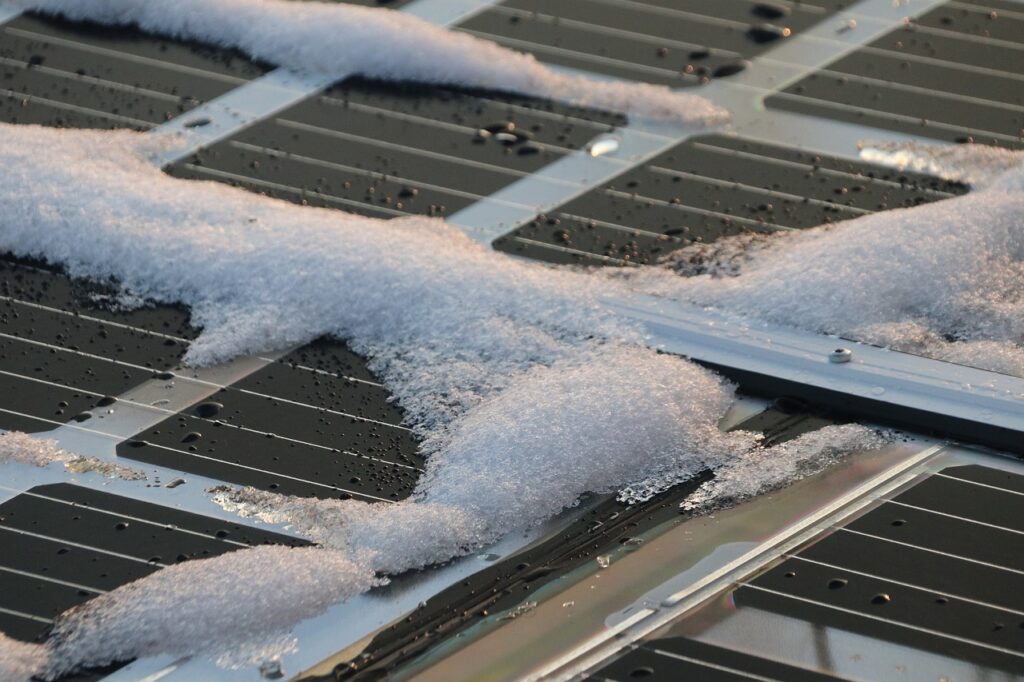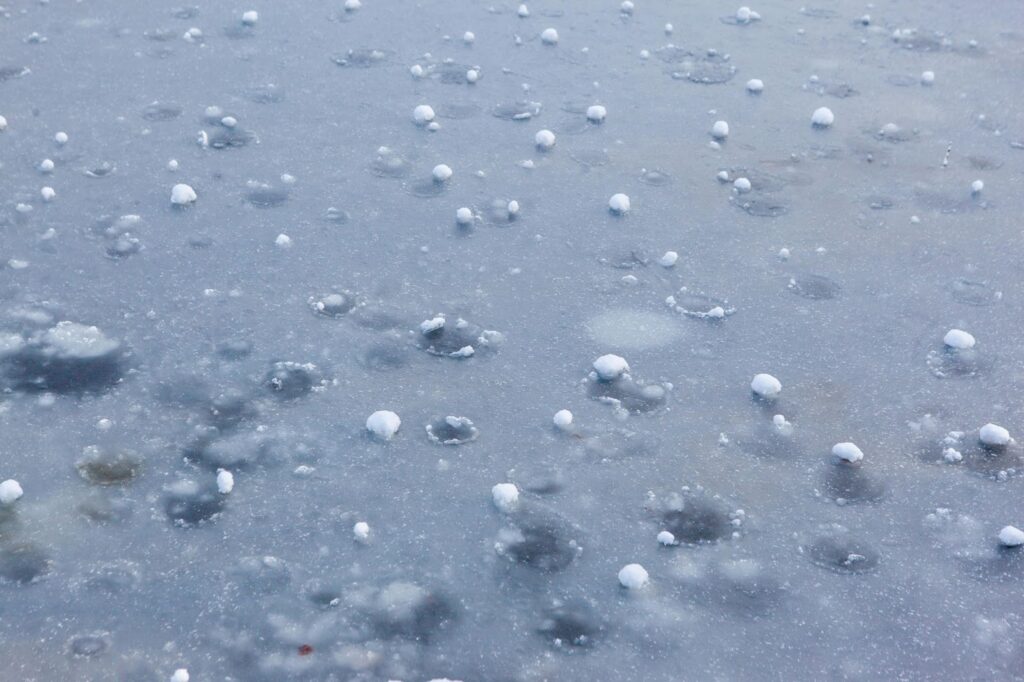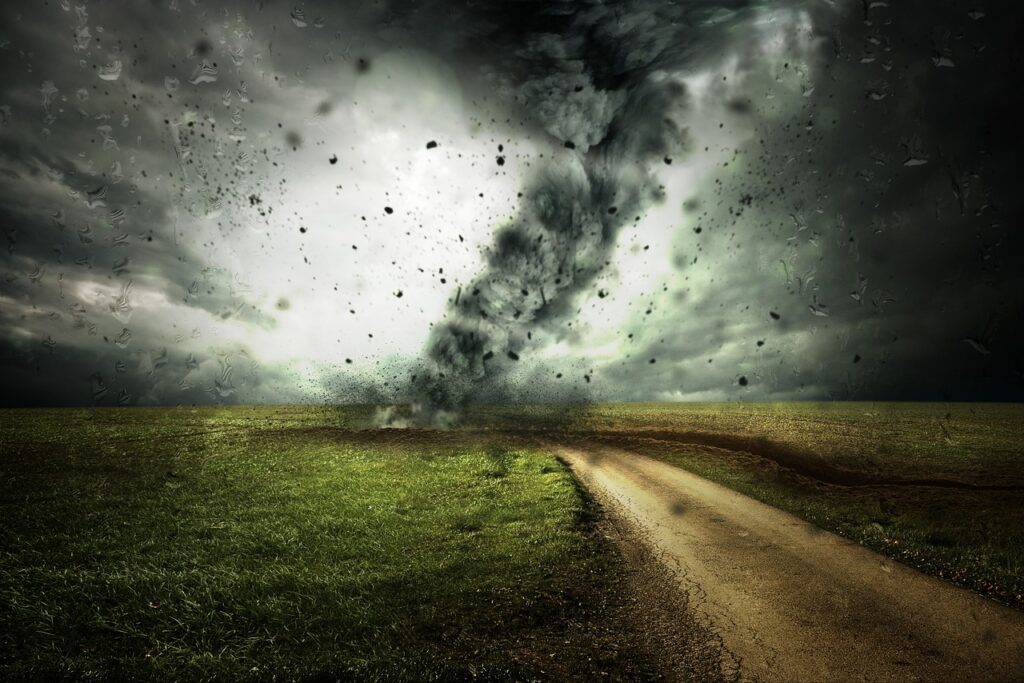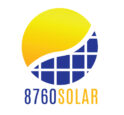
Colorado is known for its abundance of sunshine – perfect for solar energy systems – but let’s not forget that it’s a mountainous region too. It also has its fair share of thunderstorms and severe weather, particularly along its eastern slopes.
In fact, when it comes to states suffering from severe summer weather, Colorado is close to the top of the list in 5th place. In monetary terms, this equates to an annual average property damage of just over $113 million.
Hail damage is the worst culprit, accumulating almost $62 million worth of annual damage and securing Colorado’s 1st place out of all states for damage caused by those tough icy spheres.
With so much carnage flying around in the air, many Coloradans are rightly concerned about how this will affect their solar panels. After all, they are not a cheap investment so it wouldn’t make sense to get them if they are only going to get damaged as soon as a storm passes by.
The good news is that solar panels are incredibly resilient to all kinds of weather and can easily withstand severe storms
To reassure you further, let’s get into the detail of how they achieve that resilience.
In a Nutshell
- Colorado is the worst state for hail, but even during a severe hailstorm, solar panels proved to be incredibly resilient.
- 8760 uses Trina Solar panels which can easily withstand egg-sized hailstones thrown at a speed of 60 mph.
- Most solar panels – including Trina Solar’s – can cope with winds of up to 140 mph (category 4 hurricane).
- Snow is extremely unlikely to damage a solar panel as the tilt of the panel generally causes the snow to slide off.
- Solar panels do not attract lightning and a strike would be incredibly rare.
Can Solar Panels Be Damaged by Hail?

Let’s jump straight into the worst offender – hail.
In June 2023, hailstones as large as baseballs rained down upon Fort Morgan and other northern sections of Colorado’s Eastern Plains. While it’s uncommon for hail to get this huge, it’s still a cause for great concern among solar system owners.
When hail gets this big and bad, yes, solar panels can be damaged by its onslaught, but it’s rare.
In 2017 a massive hailstorm pummeled Denver, shattering windows and damaging countless vehicles. One area that was particularly hard hit was the National Renewable Energy Lab in Golden – an area that is home to 3,168 solar panels.
After the onslaught finished, an inspection of all the solar panels was carried out and only one was found to have sustained damage.
Yep, you read that correctly. Just one single solar panel!
The solar panels 8760 Solar uses for its installations are manufactured by Trina. This manufacturer has placed its panels under extensive testing to ensure they stand up to severe hail conditions.
Using a pneumatic emissions device, the company subjected its solar panels to a sustained hail attack using hailstones 1.37 inches wide (about the size of an egg). The hail was delivered at a constant speed of 60 miles per hour.
When the test concluded, the 670W Vertex modules were completely intact with no micro-cracks detected.
The secret to this incredible resilience lies in the solar panel’s layer of tempered glass. This tough material has impeccable shock resistance that makes it the ideal material to protect solar cells.
How to Protect Your Solar Panels From Hail
While there are a few things you can do to protect your panels from hail, you can greatly improve their chances of survival by picking quality solar panels in the first place.
Not all solar panels are created equal, so their resistance to hail will be dependent on the durability and quality of the materials they are made from.
This is why 8760 uses Trina Solar – we know they’re up to the job.
If you’re in doubt, make sure you purchase panels that are rated UL 61730. This means they have gone through rigorous testing standards to withstand hail conditions. (Trina Solar was the first solar panel manufacturer to be certified for this standard).
Additionally, here are some additional measures you can take – though not all of them may be practical for your setup:
- Protective casing: Hard covers are available to protect solar panels which you can place on them when bad weather is expected. These are more ideal for smaller solar installations, though, and they block access to sunlight while in use.
- Methacrylate: Methacrylate is a substance that you can spray on your panels for extra protection. Consult your solar developer before using this as it can be easy to use too much and reduce your panel’s ability to absorb light.
- Wire mesh: An inexpensive solution is to protect your panels using wire mesh. This will stop hail from reaching the panel’s surface while still letting in light. It looks ugly, though, and is more likely to get debris stuck in it.
Can Solar Panels Be Damaged by High Winds?
In February 2023, the Colorado Division of Aeronautics confirmed a 148 mph gust of wind in Monarch Pass and in April 2022, the weather services issued 62 red flag warnings – the most since records began.
The average wind speed in Colorado ranges from 18.53 mph to 28.52 mph, depending on the specific location so, in short, Colorado is a windy place to be (the 5th windiest state overall, in case you were wondering).
What does this mean for solar panels?
Well, not a great deal, really.
Most modern solar installations are designed to withstand winds of up to 140 mph which is the equivalent of a category 4 hurricane.
Trina Solar’s panels have been tested to this wind speed and were found to “shake strongly” but not sustain any damage. In contrast, the reference module used in the test was blown away.
So, unless you decide to mount your solar panels in Monarch Pass, it’s highly unlikely they will be affected by Colorado’s windy days.
How to Protect Your Solar Panels From High Winds

Your main concern during high winds isn’t the solar panels themselves, but whatever surrounds them.
Flying debris at accelerated wind speeds can damage the surface of solar panels, so if extreme winds are expected, it will be beneficial to inspect the area and secure or remove anything that is loose and likely to fly away.
For example, fallen tree branches, loose roofing panels on outbuildings, and any tools or equipment you have lying around.
Additionally, you can perform an inspection of your solar panel mounting and ensure that all the fixings are secure. Doing this before and after the extreme wind is important as fixings can become loose during the storm.
If anything has come loose, call out a professional to fix it so you can be sure it is sufficiently secured before the next storm hits.
Can Solar Panels Be Damaged by Heavy Snow?

As we’ve already demonstrated, solar panels are ultra-tough and if they can withstand harsh hail, then they can definitely withstand snow.
The main concern with snowfall is the reduced efficiency of your panels when the accumulated powder prevents light from reaching the panel’s surface. However, due to the tilt of the panels, the snow doesn’t sit there for long and eventually slides off.
As far as damage is concerned, it is extremely unlikely that snow will do any harm to your solar system. Their watertight design prevents moisture from penetrating the innards of the panel, and their design means they can withstand heavy loads.
During Trina Solar’s snow load testing of its 670W modules, it was found that they could easily accommodate the pressure generated by over nine feet of snow. Of course, it is almost impossible for this amount of snow to accumulate in the first place since the tilt of the panels would cause the snow to slide off before it got that high.
How to Protect Your Solar Panels From Heavy Snow
When you work with a solar developer, they will analyze your land to determine the best degree of tilt to ensure snow doesn’t hang around.
The minimum tilt is 10 degrees, but depending on the latitude of your land and the amount of average snowfall in your region, this can be increased. As an example, solar panels installed in Alaska require a much steeper tilt of around 60 degrees to cope with the snowfall.
Beyond this, there’s not much else that you can do – or even need to do – to protect your panels from snow. In any case, if the snowfall has been particularly heavy, a quick sweep with a brush will clear the panel and enable it to start harvesting energy once more.
Future technology for keeping panels clear of snow is interesting. High-tech systems may eventually feature oscillating or vibrating solar panels that gently shake the snow off, and even solar panels that can heat up and melt snowfall have been developed.
Can Solar Panels Be Damaged by Lightning?

The good news is that solar panels don’t attract lightning and it is, therefore, incredibly rare for a solar system to be hit by a bolt. The more likely scenario is that the solar panels suffer damage from an indirect lightning hit – perhaps by something falling from a nearby tree or building.
If a solar panel does suffer a direct hit, it will absolutely damage it and usually beyond repair. The panel will shatter and melt and any electrical components and the inverter will likely fry.
An indirect hit will be less severe, but the massive high-voltage surge will still cause damage to most of the system’s components.
As we said, it’s incredibly rare for this to happen and if it does, it will have been from pure bad luck rather than anything you did or didn’t do.
How to Protect Your Solar Panels From Lightning
The best thing you can do to protect your solar system from lightning is to get it installed by a professional solar developer. This will ensure that your system is up to code and relevant safety standards.
Furthermore, the solar developer will also ensure that the solar system has been installed with sufficient surge protection and that it has been properly grounded to avoid lightning strikes in the first place.
Your job beyond that is to keep your solar panels well-maintained and get a professional inspection carried out at least once every two years. That will help keep your panels in tip-top condition and prevent them from becoming unsafe.
Get in Touch With 8760 Solar

If you’ve made it this far, then you will already know that 8760 Solar uses high-quality, robust equipment for its solar installations.
Our team is experienced and knowledgeable in providing solar energy for Colorado’s farms and agricultural businesses, so we know exactly what the weather can be like!
We provide a full analysis of your farm to determine the best type of setup for your needs and circumstances, and that includes taking the weather into consideration.
If you’re ready to find out just how much solar energy can benefit you and your business, then Text “READY” to 719 470-0254 or contact us via email: sales@8760solar.com. We’re looking forward to talking with you.
Frequently Asked Questions
Can Solar Panels Withstand Storms?
Yes! High-quality solar panels can withstand storms quite easily. They are watertight and made to cope with winds up to 140 mph. The tilt of them allows snow to slide off effortlessly, and the tempered glass makes them very resistant to hail.
How Do You Hurricane Proof Solar Panels?
Solar panels are made to withstand winds of up to 140 mph as long as they are securely installed. Therefore, having your panels installed by a professional will ensure their sturdiness. Additionally, when a storm is expected, make sure you fasten or remove anything nearby that could be picked up by the wind and thrown onto the panel’s surface.
How Weather Resistant Are Solar Panels?
Solar panels are created with weather resistance in mind. They are completely waterproof and very robust. Thanks to their design and tough, durable materials, they are unlikely to be damaged by high winds, snow, or hail.
Can Solar Panels Survive a Tornado?
Yes, solar panels can withstand tornados. Most solar panels are certified to withstand winds of up to 140 mph. In hurricane-prone areas like Florida, the panels must be certified to withstand winds of up to 185 mph. For comparison, F2 tornadoes have winds ranging between 113-157 mph.
What Happens If Lightning Hits a Solar Panel?
If lightning hits a solar panel directly the glass will shatter and the components will melt, including the inverter rendering it damaged beyond repair. Fortunately, solar panels do not attract lightning so a direct strike would be an incredibly rare event.
